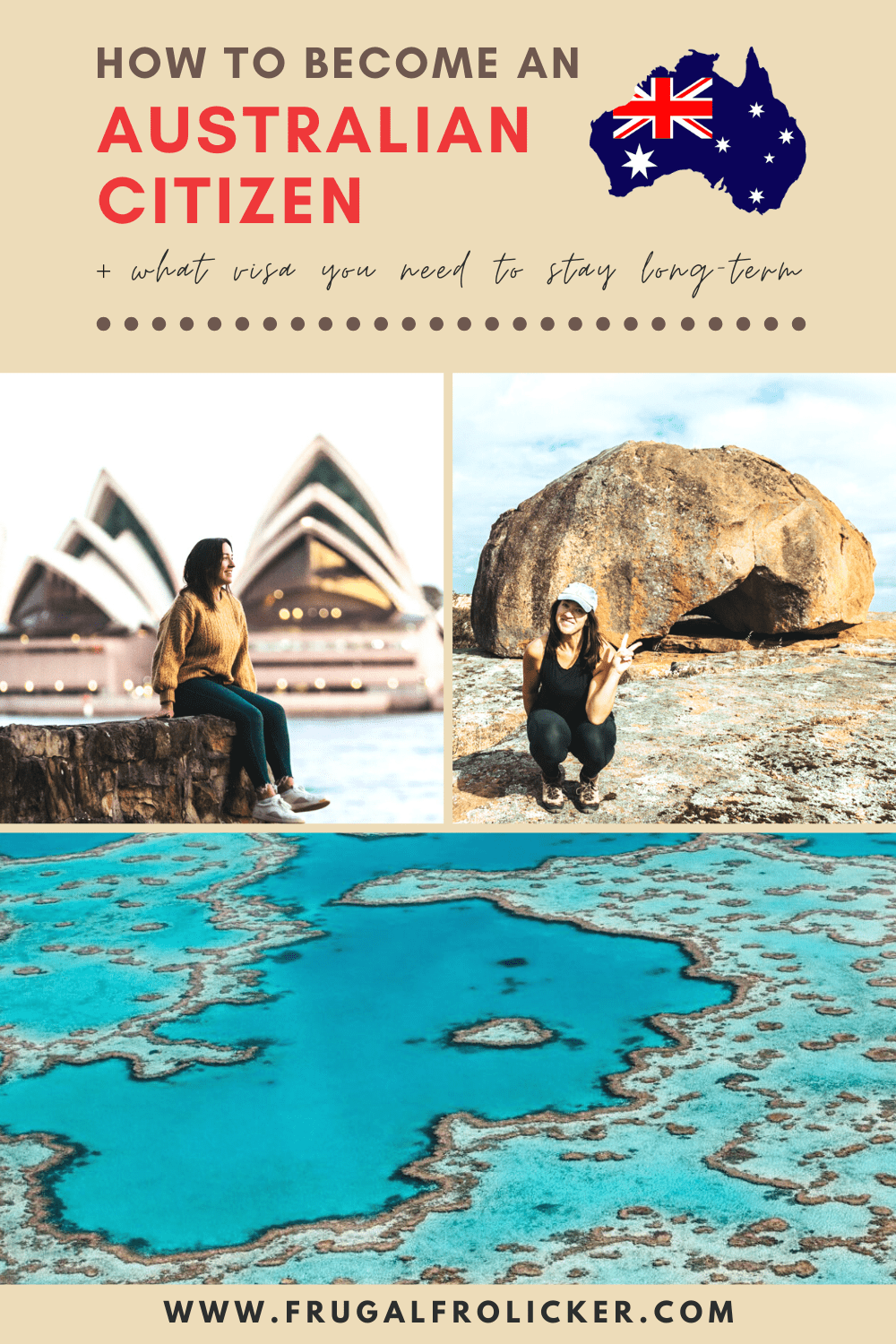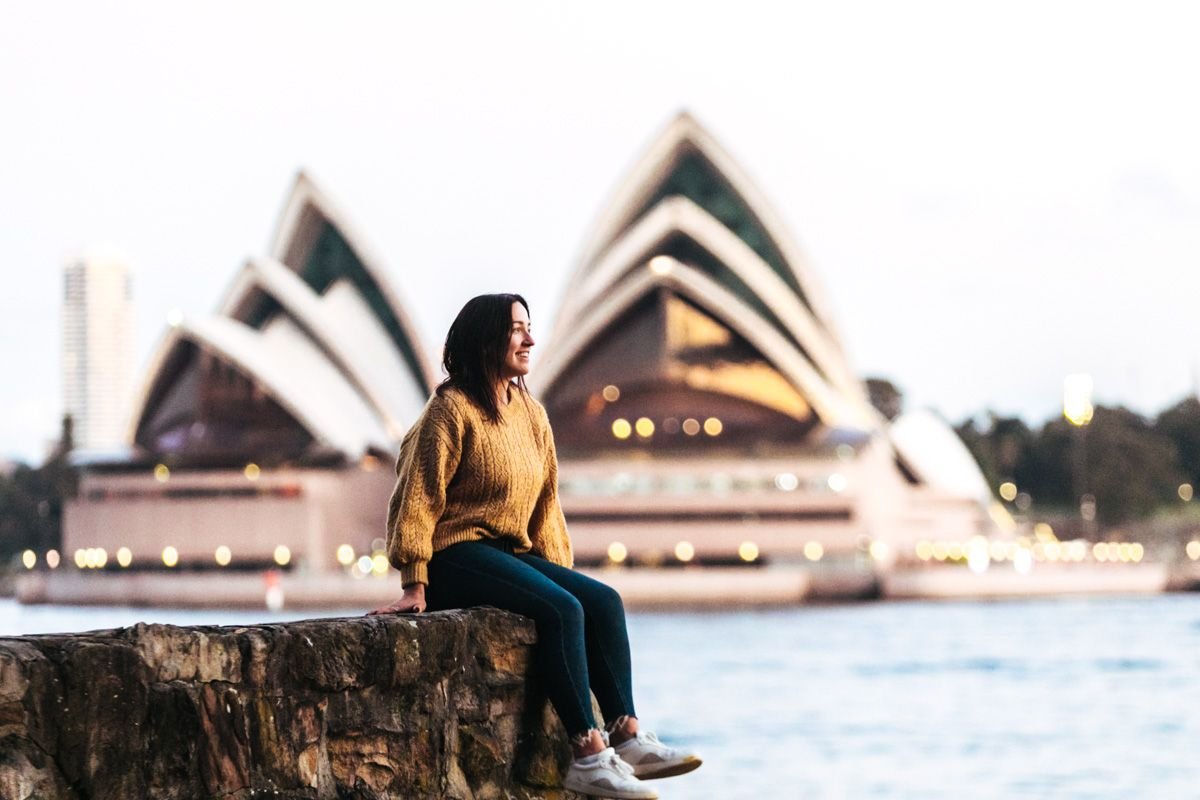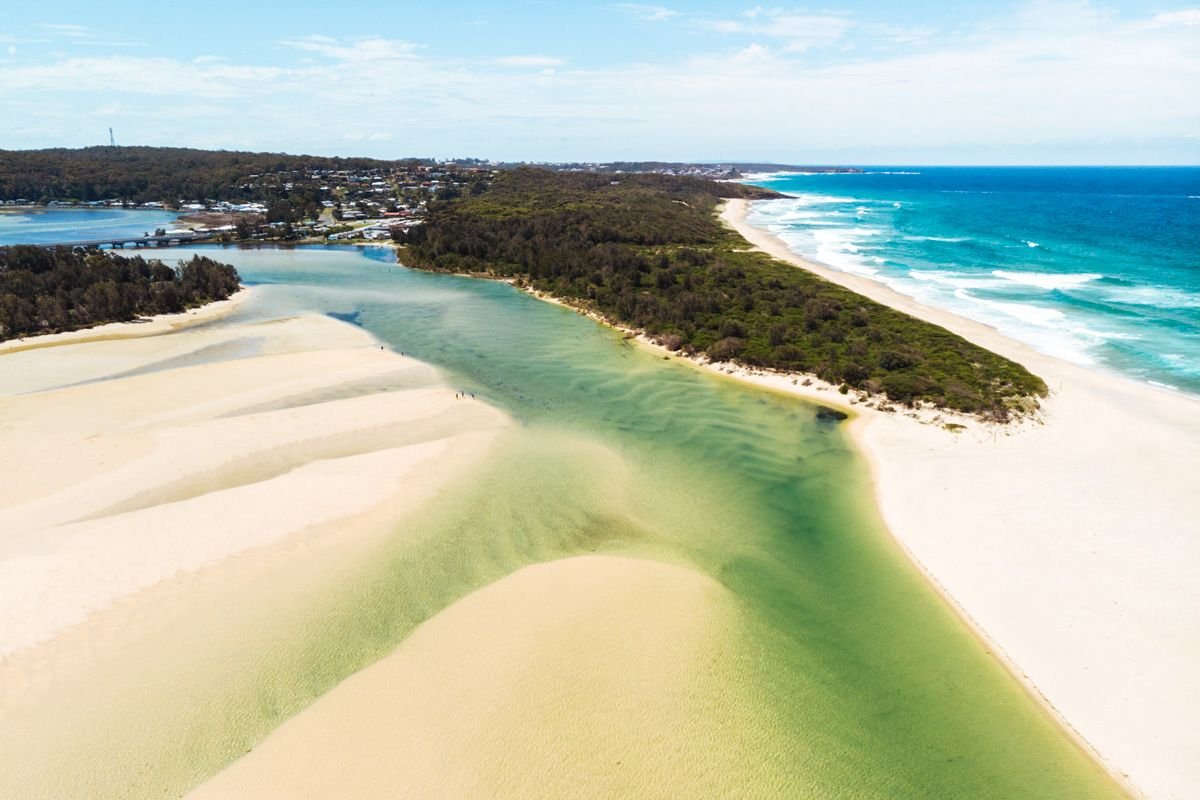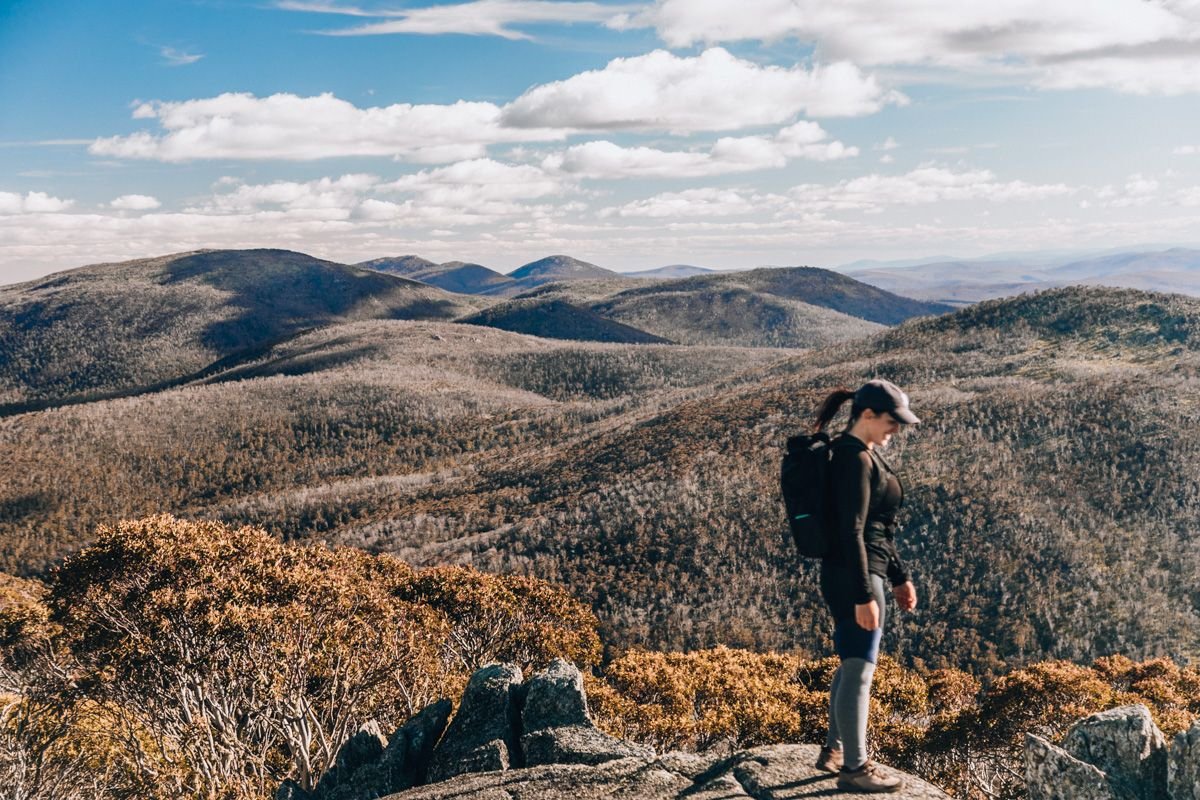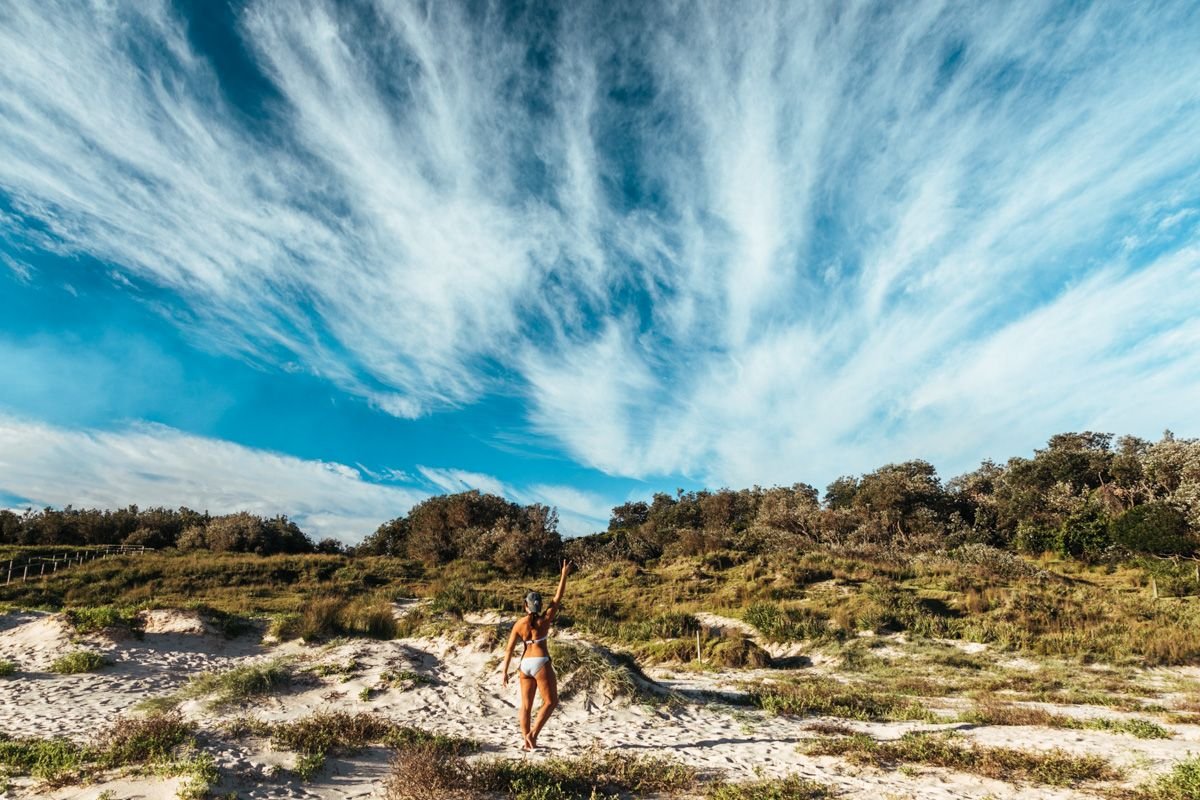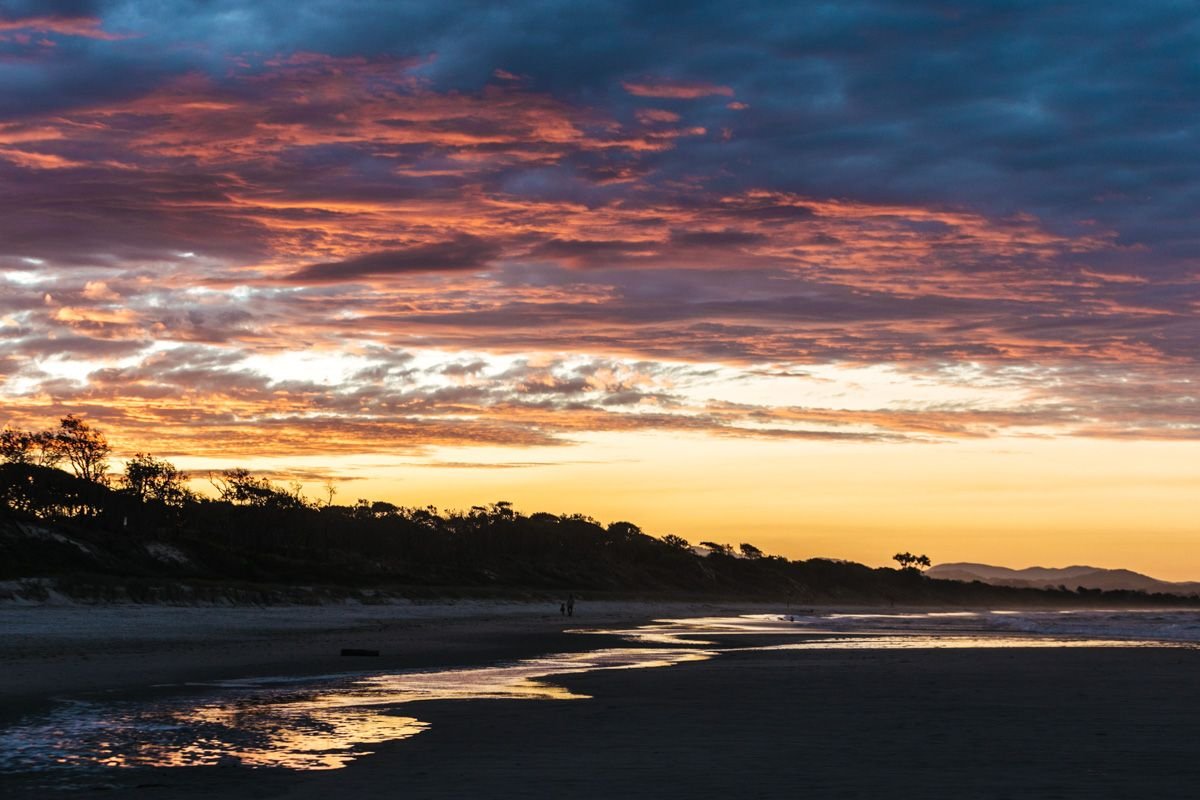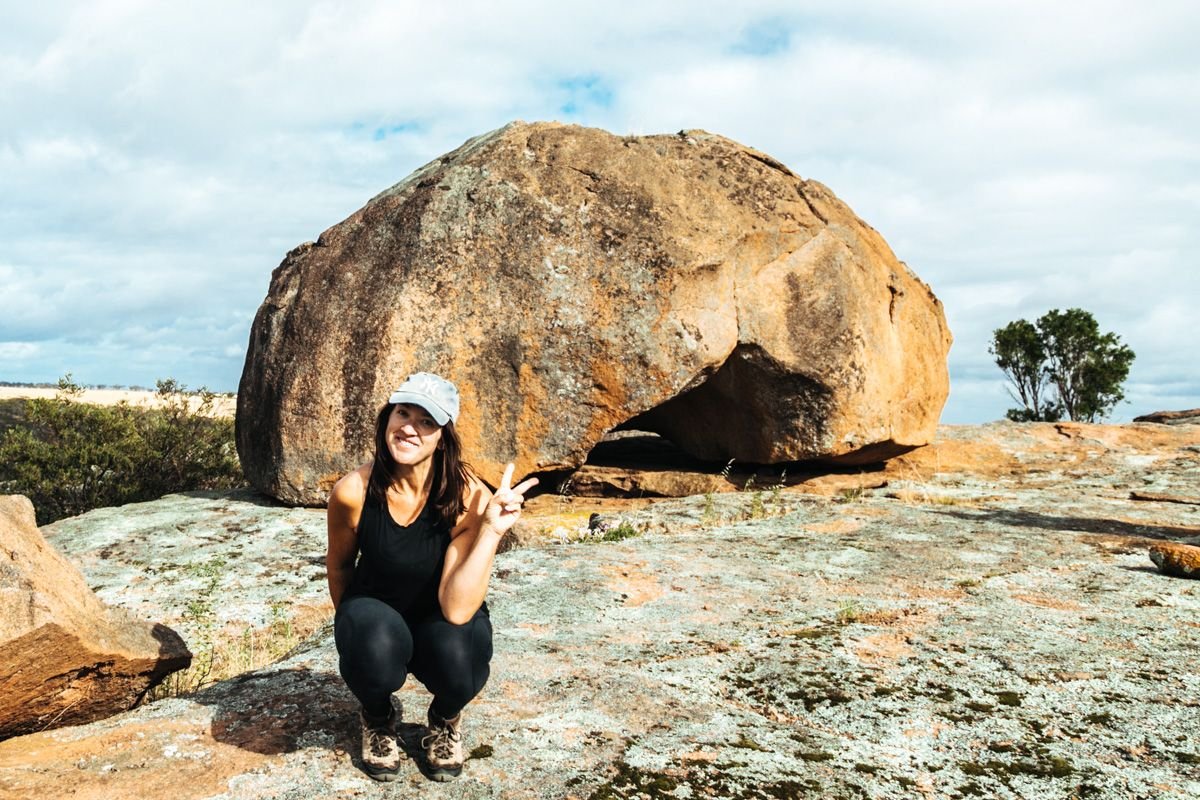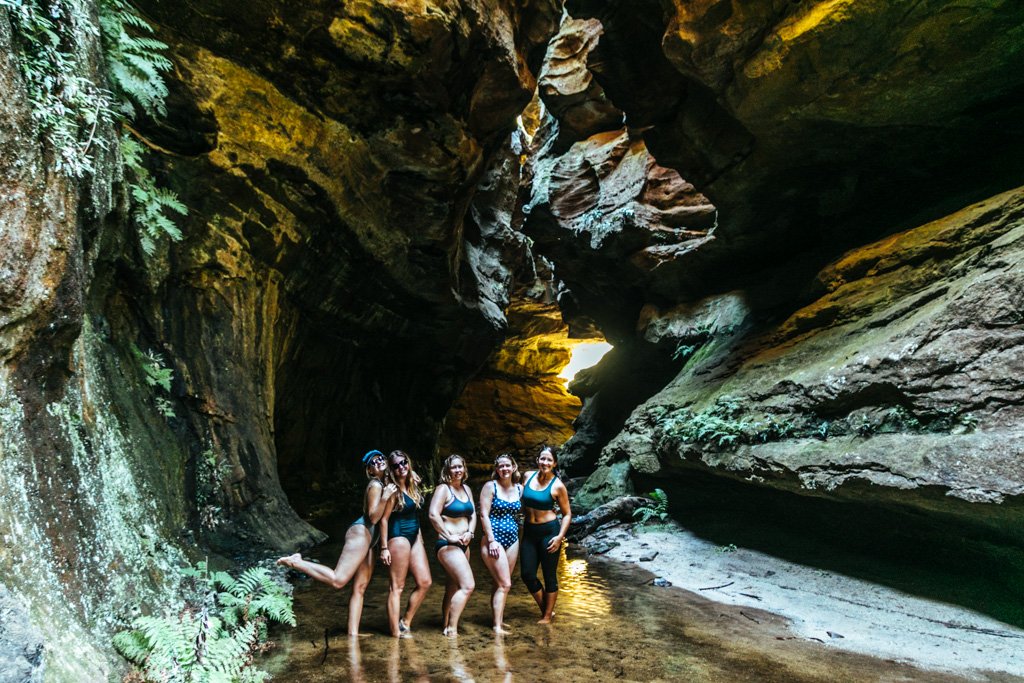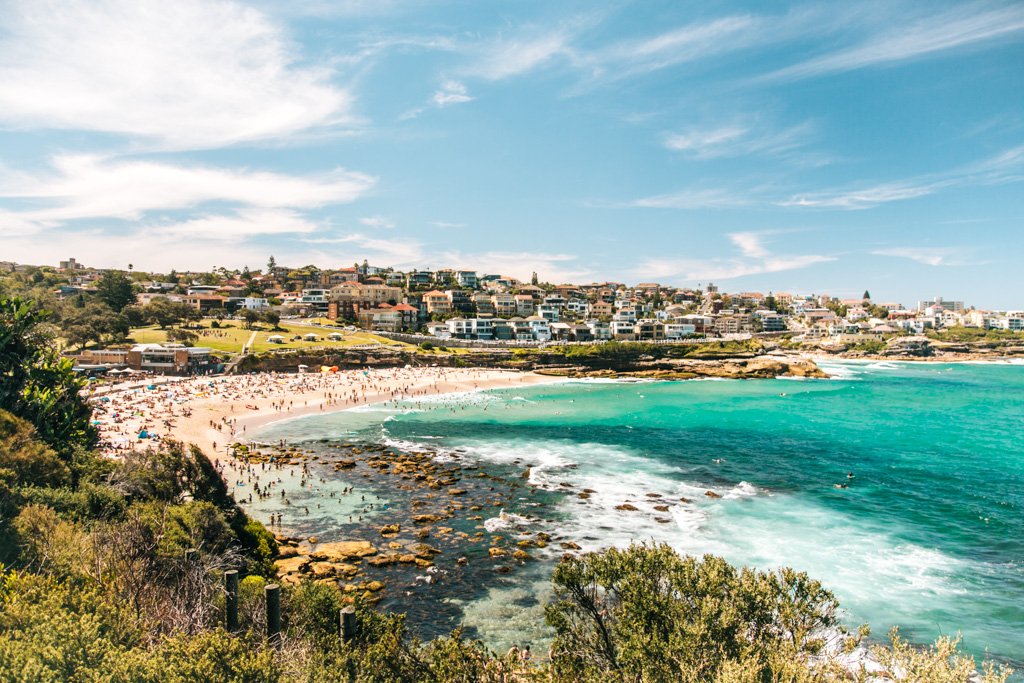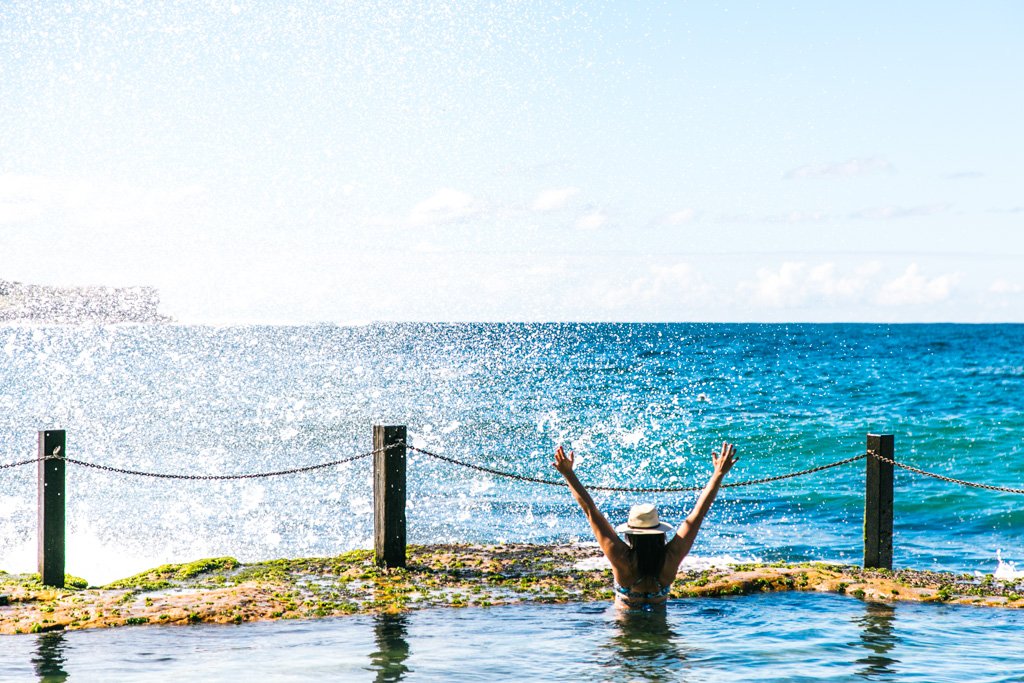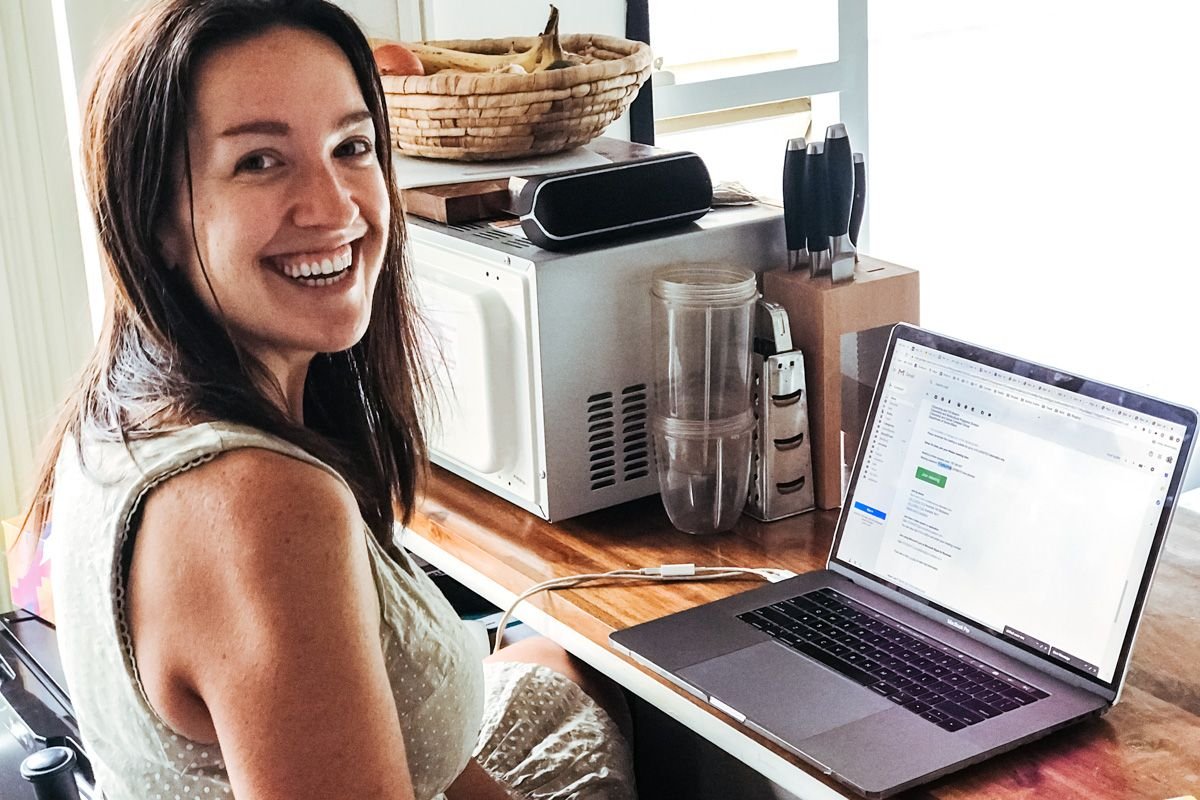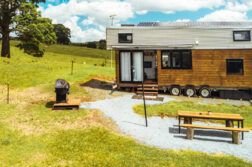This post was last updated on 2024 September 17
This article on How To Become An Australian Citizen (My Immigration Story) may contain affiliate links. If you click and make a purchase using these links, I will make a small commission at no extra cost to you. Thanks so much for supporting Frugal Frolicker! :)
Important disclaimer: I AM NOT AN IMMIGRATION LAWYER. I cannot advise you on what to do to become an Australian citizen. I am only sharing *my* pathway to Australian citizenship.
Important note: There have been changes to some Australian visa structures in recent years since I went through the immigration process, so what worked for me from 2014-2020 may not work for you today.
—
Well this has been a long time coming!
I’ve been meaning to write about the process of how to become an Australian citizen for ages now, but um… I kinda needed some time to recover from it all. Fellow expats in Australia, you’ll feel me on this one.
The truth is, applying for visas here is downright EXHAUSTING. Often you don’t know when or even IF you’ll get approved for the visa you applied for. And my god, the amount of money you spend and the number of hoops you have to jump through to be able to stay in this country, I swear it’s enough to give you PTSD.
So yeah, I needed a minute before I was ready to write this post.
In case you’re new around here, I left the US and moved to Australia in December 2014 on a work and holiday visa. I had no idea it would even be possible for me to become an Australian citizen until I started doing extensive research into my visa options about 18 months into my time here.
My journey from backpacker to permanent resident to citizen has been anything but breezy. In fact, it’s been one of the biggest stressors in the past 5 years of my life. But once I got my PR in September 2018, I could finally relax and rejoice. Getting citizenship in April 2020 was the cherry on top.
In this post, I’ll take you through how to become an Australian citizen – or at least, what I did to become one. Though as I mentioned at the start of this article, what I did may not work for you now. That’s ok – as long as you learn something or get inspired by my journey, that’s all that matters!
Ready? Let’s do this thing!
READ MORE IN THIS POST: What Happens Next
Planning a trip to Australia?
These are the sites I use and recommend for booking travel:
ACCOMMODATION IN AUSTRALIA: I always search on Booking.com for accommodation, as their Genius loyalty program offers 10-20% discounts and free breakfast/upgrades for certain hotels.
FLIGHTS TO AUSTRALIA: When researching flights, I always check Skyscanner first because it pulls in flight options across all airlines and saves you the trouble of searching each airline individually. When booking flights via Skyscanner, I always book directly with the airline rather than one of the third party options.
CAR RENTAL IN AUSTRALIA: When renting a car on your travels, check DiscoverCars.com for the best deals.
ACTIVITIES IN AUSTRALIA: If you’re looking to book tours or other organized activities on your travels, GetYourGuide and Viator both offer myriad options for fun things to do all around the world (think: sailing trips, cooking classes, city walking tours, and more).
TRAVEL INSURANCE FOR AUSTRALIA: Unless you can easily afford to pay for huge unexpected medical bills, DON’T TRAVEL WITHOUT TRAVEL INSURANCE! These days, I usually buy the Safety Wing nomad insurance, as it’s very affordable and caters to digital nomads with a monthly subscription option. I’ve also been a longtime World Nomads user, and will still use them if I need more comprehensive insurance (e.g. for adventure activities) or if I am visiting the US (Americans aren’t eligible for Safety Wing’s US add-on option).
ESIM / SIM CARDS FOR AUSTRALIA: When traveling overseas, I always purchase an eSIM from Sims Direct for the country I’m going to, activate it before I depart, and as soon as I arrive I am automatically connected to the local network and can easily find my way to my accommodation. No need to to buy a local SIM card at the airport; eSIMs are fully electronic and don’t require you to take out your old SIM.
LUGGAGE: I am currently a July luggage girl (July Australia / July US). They offer a lifetime warranty, which I have used multiple times now – and every time, they have sent me a brand new replacement suitcase without hassle. I recommend their Checked Plus if traveling with 32kg/70lb of luggage (note: many airlines do not allow bags this heavy!), the Checked if traveling with 23kg/50lb of luggage, and the Carry On Light (Expanded) which is super lightweight and really helps you stay within the 7kg carry-on limit that many Aussie airlines enforce. Click to read my full review of July luggage.
Work and Holiday Visa (or Working Holiday Visa)
My Aussie journey began as many others’ does: with a work and holiday visa (aka working holiday visa). It’s no joke how many people come to Australia thinking they’ll stay a year on this visa and then end up staying here indefinitely afterwards. That’s the magic of life Down Under!
The working holiday visa is perfect for young travelers who want the experience of both living and traveling in another country, with the option of being able to work as you go. Having this safety net is HUGE because it means you don’t have to save up a ton of money before coming here, and running out of money doesn’t spell the end of your trip. If you’re low on cash, you can always pick up some casual work so that you can continue your Aussie travels.
What kind of work you can get in Australia on the working holiday visa? Pretty much anything! Retail jobs and hospitality work in bars and cafes are some of the more common and easier options for backpackers. You could also score a contract job working as an admin or doing some other skilled office work – and if you’re lucky, you might be able to get the company to sponsor you to stay in Australia and work for them long term! The only caveat is that you’re not supposed to work for the same employer for more than 6 months while you’re on this visa.
As for me, I worked the winter season at El Questro Wilderness Park up in the Kimberley region (up near Darwin), and then I started SEO freelancing towards the end of my working holiday visa.
There are actually two versions of the working holiday visa: the 462 and the 417. They’re essentially the same thing, and your country of citizenship determines which visa you can go for (Americans can get the 462 only).
If you’re aged 18-30 and from one of the countries eligible for the Australian working holiday visa, you can apply for it. One difference is that with the 417 visa, you can apply up to age 35 if you’re from Canada, France, or Ireland.
Both working holiday visas cost AU$485 and last for 12 months. They also now have the option of being extended by not one, but two more years – which means you could stay in Australia for up to 3 years on a working holiday visa. The only catch is that to earn your extension, you must complete 3 months of “specified work”, which is mostly farm work or work in the more rural areas of Australia. And yep, you gotta go through it twice (so 2 x 3 months) if you want 2 more years on this visa.
Farm work in Australia kinda gets a bad rep, but I think it’s such a unique life experience. It’s something you’d probably NEVER do back home, but yet when you’re a backpacker in Australia it’s a right of passage.
When I was on the 462 work and holiday visa in 2015, there was no option for extending the work and holiday visa if you were American – which resulted in a lot of extra hassle and stress for me because I had to keep switching visas after my first year in Australia (more on that below). The worst part is that I actually did 3 months of “specified work” and would’ve been eligible for the extension, had it existed at the time! Ugh, so frustrating. They really made me earn my right to stay in Australia, that’s for sure!
The good thing is that at least it’ll be easier for YOU to stay in Australia now, should you want to live here for more than a year (and I’m pretttttty sure you will).
APPLY FOR THE WORK AND HOLIDAY VISA OR WORKING HOLIDAY VISA.
READ MORE IN THIS POST: A Year In Australia: What I Spent (& Other Numbers)
Tourist Visa (or Visitor Visa)
Once my working holiday visa ended, I needed another visa in order to stay in Australia. I thought a tourist visa would be my best option, as it would buy me time to figure out a more permanent plan for migration.
Here’s the thing, though: Aussie Immigration tends to get a little suspicious of those that apply for a tourist visa right after a working holiday visa. Why? Because you’re not supposed to work while on a tourist visa, and since many people work while on a working holiday visa, it’s not uncommon for someone to just continue that work while switching to a tourist visa. Immigration obviously doesn’t want anyone to do this, so that’s why they require you to leave the country before applying for a tourist visa.
If you do want to apply for a tourist visa, I suggest leaving Australia when your working holiday visa ends and waiting a little while before doing so. Of course you’d be taking a gamble, as you’re assuming you’ll be granted the visa after you’ve already left Australia and there’s no guarantee of it – which would really suck if you had left a lot of belongings behind! (I mean, you’ll probbbbbably be fine, but you never know)
There are 3 types of Australian tourist visas (or visitor visas):
- Visitor Visa (600) – AU$145; can be granted for a stay of 3-12 months, which is great because you don’t need to leave the country every 3 months. I’ve heard that they often deny applications from people who have just been on a working holiday visa, so you might be safer applying for one of the other tourist visas below.
- Electronic Travel Authority (601) – free + AU$20 service charge; lasts for 12 months, and you can stay in Australia for up to 3 months at a time
- eVisitor (651) – free; lasts for 12 months, and you can stay in Australia for up to 3 months at a time
The 601 and 651 are basically the same visa, but Americans are only eligible for the 601.
Personally, I took the gamble and at the end of my working holiday visa, I flew to Bali for a month before applying for my 601 tourist visa. It was granted, and I was able to fly back to Australia as planned.
I then made a few “visa runs” throughout the year, leaving the country every 3 months for a few weeks and then returning to Australia to resume life here. The 601 visa is valid for 12 months, but you can’t stay for more than 3 months at a time.
And again, I wouldn’t have had to do this a year later, once Americans finally got the right to a second year working holiday visa. Sigh.
Would I recommend staying long term on a tourist visa straight after a working holiday visa? No! I got pulled aside by Immigration at Sydney Airport after my 3rd visa run (about 10 months into my tourist visa) and was questioned about my comings and goings, asked to show my bank accounts, and had to hand over my phone for inspection. It was absolutely TERRIFYING. I am so lucky and grateful that I was allowed back into the country.
They sometimes question tourist visa holders like this just to make sure they aren’t trying to “reside” in Australia while on a non-working visa (which MANY people do, illegally). If they find any proof of you working or living somewhere permanently in Australia, they have reason to kick you out of the country.
APPLY FOR THE VISITOR VISA, ETA VISA, OR EVISITOR VISA.
READ MORE IN THIS POST: How To Stay in Australia Without Marrying An Australian
Planning a trip to Australia?
These are the sites I use and recommend for booking travel:
ACCOMMODATION IN AUSTRALIA: I always search on Booking.com for accommodation, as their Genius loyalty program offers 10-20% discounts and free breakfast/upgrades for certain hotels.
FLIGHTS TO AUSTRALIA: When researching flights, I always check Skyscanner first because it pulls in flight options across all airlines and saves you the trouble of searching each airline individually. When booking flights via Skyscanner, I always book directly with the airline rather than one of the third party options.
CAR RENTAL IN AUSTRALIA: When renting a car on your travels, check DiscoverCars.com for the best deals.
ACTIVITIES IN AUSTRALIA: If you’re looking to book tours or other organized activities on your travels, GetYourGuide and Viator both offer myriad options for fun things to do all around the world (think: sailing trips, cooking classes, city walking tours, and more).
TRAVEL INSURANCE FOR AUSTRALIA: Unless you can easily afford to pay for huge unexpected medical bills, DON’T TRAVEL WITHOUT TRAVEL INSURANCE! These days, I usually buy the Safety Wing nomad insurance, as it’s very affordable and caters to digital nomads with a monthly subscription option. I’ve also been a longtime World Nomads user, and will still use them if I need more comprehensive insurance (e.g. for adventure activities) or if I am visiting the US (Americans aren’t eligible for Safety Wing’s US add-on option).
ESIM / SIM CARDS FOR AUSTRALIA: When traveling overseas, I always purchase an eSIM from Sims Direct for the country I’m going to, activate it before I depart, and as soon as I arrive I am automatically connected to the local network and can easily find my way to my accommodation. No need to to buy a local SIM card at the airport; eSIMs are fully electronic and don’t require you to take out your old SIM.
LUGGAGE: I am currently a July luggage girl (July Australia / July US). They offer a lifetime warranty, which I have used multiple times now – and every time, they have sent me a brand new replacement suitcase without hassle. I recommend their Checked Plus if traveling with 32kg/70lb of luggage (note: many airlines do not allow bags this heavy!), the Checked if traveling with 23kg/50lb of luggage, and the Carry On Light (Expanded) which is super lightweight and really helps you stay within the 7kg carry-on limit that many Aussie airlines enforce. Click to read my full review of July luggage.
Student Visa
Midway through my year on the tourist visa, I realized I was eligible for a more permanent visa and began the application process for that – however, the processing time was close to a year at that point, so I knew I wouldn’t be granted this new visa before my tourist visa ran out.
I could have left the country indefinitely and waited god knows how long to come back and resume my life in Australia – but I didn’t want to play the waiting game without knowing exactly how long the wait would be. And at that time, I was going through a phase of just wanting to settle down for awhile and not be constantly on the go. I wanted to have a settled life in Sydney, with a lease and friends and a routine.
Had I been in one of my periodic nomadic phases, I’d have eagerly left Australia and traveled all over the place until I got my new visa. But alas – it just wasn’t the time for that. So I went for a student visa and signed myself up for the cheapest, most conveniently-located course I could find!
Most people who want to stay in Australia after the working holiday visa end up applying for a student visa straight after. This is a relatively easy way to guarantee an extension of your time Down Under, and it’s what a lot of backpackers who haven’t found a more permanent way to stay here end up doing, often for several years.
Here’s what you might not know: in Australia, there exists a type of school (or college) designed specifically for backpackers who just want a student visa and don’t necessarily care about the course they take or the quality of education. In other words, they aren’t studying at a major university for 4 years with the aim of earning a degree that they can use to propel their future career (after all, those are expensive!). Nope, they sign up for a 1-year certificate course at one of these colleges, which are much more affordable (think AU$1600/quarter) and lax about attendance and grading. It’s kinda like an unspoken understanding that the college exists solely for student visa purposes, not so much for education.
Having experienced both an Aussie university (back in 2006 when I did a year at Sydney Uni) and an Aussie international college (in 2017, while waiting for my independent skilled visa to come through), I can tell you the experiences were like literal night and day. My college experience was an utter joke in comparison to my university experience. But hey, I went into it knowing this would be the case – I only wanted the visa, not necessarily a great education!
And when I say that some of the colleges here are a joke, think: teachers who spend the whole class talking about their/our personal lives rather than the course material, mark students off as having attended class for the day if they only stay for a few minutes, and end up quitting after just a couple months because they’re so bored with their disengaged students.
All that to say that these colleges are VERY appealing to young foreigners in Australia because they can essentially live a normal life here and work and not have school take up too much of their time. There were students in my class who would regularly skip class on 1 of the 2 days it was held each week because it conflicted with their work schedule, and no one cared.
When you’re on a student visa, you can work up to 40 hours a fortnight (averaging 20 hours/week) and you must have a 50% class attendance rate in order to keep your visa. From what I’ve seen and heard, there are a lot of people ignoring these rules and not getting into any trouble over it, so… make of that what you will.
Also, apparently it’s possible to sign up for a massage course when you have a student visa, so… that could be fun?
The Australian student visa costs AU$620 and can be granted for up to 5 years, depending on how long your course or degree is for.
APPLY FOR THE STUDENT VISA.
READ MORE IN THIS POST: From Backpacker to Permanent Resident: Celebrating My 3 Year Aussieversary
Skilled Independent Visa (or Skilled Nominated Visa)
If you want to stay in Australia long term or even permanently, you really need to be looking at either a partner visa or a working or skilled visa. These visas grant you full working rights in Australia, and potentially permanent residency.
In short, here are what those 3 options look like:
Partner visa – If you are in a serious committed relationship with an Australian citizen, you can apply for a partner visa (Subclass 801/820). It usually takes a long time to go through (like, a few years) and involves an inordinate amount of paperwork. It’s also the most expensive Australian visa option at AU$7715, but you do get permanent residency with it.
One caveat to this visa is that, if you end your relationship with your Aussie partner, you have to leave the country (unless you’ve gotten your Australian citizenship) – because technically, your partner is sponsoring you to stay in Australia.
Work visa – A work visa is what you get when an employer sponsors you to work for them. Formerly known as the 457 visa, this is now called the Temporary Skill Shortage visa (Subclass 482).
A work visa is probably the easiest of these 3 options, and the cheapest as typically the employer will pay the visa fees – but it’s a temporary visa that lasts 2-4 years, and you don’t automatically get permanent residency with it (however, you may be able to apply for a permanent residency visa such as Employer Nomination Scheme visa (Subclass 186) after a certain number of years).
If the 482 visa doesn’t work for you, another work visa option is the Skilled Employer Sponsored Regional visa (Subclass 494), where a regional employer can sponsor you to work for them.
Similar to the partner visa, if you cease working for that employer, your work visa will expire and you’ll have to leave Australia unless you get another visa really quick (e.g. you find a new job and that employer sponsors you).
Skilled visa – A skilled visa can be granted based on the skills (i.e. education and work experience) you have, which happen to fill a gap that Australia (or a specific state/territory in Australia) has. These skill lists change annually, depending on Australia’s needs. The options and the processes for applying for these visas can be overwhelming and a bit convoluted, but it is well worth putting in the effort to see if you’re eligible for a skilled visa because it’s the BEST Australia visa option. Why? Because you’re not reliant on an employer or a partner to sponsor you, and you can get permanent residency.
I recommend going through each visa option on this page under ‘Working and skilled visas’ and determining if there’s any you might be eligible for. And dig DEEP, because there might be a skill on the list that doesn’t look like it matches your experience, but then when you look into what it entails, it actually does (which is what happened to me when I ended up applying under the ICT business analyst skillset).
The holy grail of skilled visas in Australia is Subclass 189, the Skilled Independent Visa. The skills list for this visa is short and mostly related to medicine and engineering, which means that not many people are eligible to apply for it. But if you get this visa, you can live and work anywhere in Australia, and get permanent residency. You’re not tied to a job, a partner, or a certain location, as you are with most other visas, i.e. it’s the visa that offers the most FREEDOM.
The next best visa option, if you’re not eligible for the 189, is one of the ‘regional’ skilled visas. Generally, regional skilled visas require you to have a certain skill, and live and work in a certain regional location (i.e. not in a major city) for x number of years. Among these, you have the Skilled Nominated visa (Subclass 190) and the Skilled Work Regional visa (Subclass 491), where a certain state or territory must nominate you for the visa. With these visas, a state or territory is sponsoring you to stay in Australia, rather than an employer or a partner. So you’re only tied to a location for awhile, and are free to switch jobs and partners without your visa status being affected.
If you’re wondering how exactly Australia determines whether you have a certain skill, it’s with a skills assessment. You have to provide details about your education and job experience, and they decide whether it’s closely related to the skill you’re claiming to have.
If it’s a yes, then you can proceed with the Points Test – which actually isn’t a test you sit for. You earn points for several different things, such as your age, English language proficiency, work experience, and education. And you have to prove ALL of them: I’m talking birth certificate, diplomas, taking an English test like the IELTS or TOEFL (yes, even if you’re American or British!), and reference letters.
The number of points you need depends on the visa you’re applying for and the skill you’re applying with. For example, when I applied for the 189 visa, the minimum number of points required was 65 – however, there were so many other people in the queue to be processed for my skill that I’d never even be looked at unless I had more points. Why? Because for each round of visa invites, they have X number of applicants they can take for each skill – and they start with applicants with the most points before working their way down. Because people keep applying for the visa, anyone who scores higher than you will push you further down the list. So I had to go back and get another work reference from a past job I had, in order to score some extra points.
Oh yeah, and as if that weren’t enough hoops to jump through, you also have to get police checks done for each country you’ve resided in for at least 12 months in the last 10 years, and you need a medical check. The fun truly never ends!
Confused? Overwhelmed? Yeah, I feel you. One saving grace for me was the Expat Forum, which kept me updated on how much longer I had to wait to get invited to apply for the visa and how many points I needed. You should be able to find the answers to any of your Australian visa-related questions here.
The Skilled Independent Visa costs AU$4045 and grants you permanent residency (aka it’s worth every dollar).
APPLY FOR THE SKILLED INDEPENDENT VISA.
READ MORE IN THIS POST: I’m Finally An Australian Permanent Resident!
Australian Citizenship
The last step on my Australian immigration journey was to become a citizen.
Once you’ve resided in Australia for 4 years and been a permanent resident for 1 year, you are eligible to apply for citizenship. You must not have been away from Australia for more than 12 months in the last 4 years, or for more than 90 days in the past year.
If you have permanent residency, you don’t really NEED to apply for citizenship, as you don’t really get any extra benefits by doing so. The one real perk is that as a citizen, you won’t need to apply for a return resident visa every 5 years when you want to travel out of the country. So those that don’t travel much are the ones most likely to keep their permanent residency status and not bother with Australian citizenship.
Another potential perk is obtaining an Australian passport, which might grant you easier access to certain countries depending on where you’re from. I don’t think having an Aussie passport really makes it easier for Americans to travel anywhere, but that could change with this whole COVID thing.
Do note that Australian citizenship also comes with more responsibility, namely that you’re required to vote in federal and state/local elections.
The Australian citizenship application was shockingly simple compared to the visa application, so much so that I questioned whether I had done it right or missed something. It costs AU$285 to apply for citizenship and the wait time from application date to ceremony date is nearly 2 years as of December 2020 (for me, it was about 1 year 3 months: I applied in January 2019 and became a citizen in April 2020)
Once your application is processed, you’ll be scheduled for an interview and a citizenship test. The test is SO EASY, as long as you read the booklet they provide as study material. I read it the night before and got a 100% score on the test in record time.
After you pass the test, they’ll invite you to attend a citizenship ceremony. Pre-COVID, you’d get an invitation in the mail to attend your citizenship ceremony, held by your local council (e.g. when I lived in Bondi, I’d be attending the ceremony by Waverley Council). Usually you’ll get about 30 days notice for it.
Since the COVID outbreak, they’ve moved citizenship ceremonies online and are holding 1:1 WebEx meetings. I was due to be invited to my ceremony right around the time COVID hit, but instead I was among the first to go through the virtual ceremony back in April. Immigration sent me an email asking if I wanted to do my virtual ceremony, or if I wanted to wait until in-person ceremonies resumed. I said yes to the virtual ceremony, and 3 days later got an invite for my ceremony to be held the following day. It was the most anticlimactic thing and took about 2 minutes in total.
APPLY FOR AUSTRALIAN CITIZENSHIP.
Just before my virtual citizenship ceremony!
And that’s it! That’s my long and trying journey from American backpacker to Australian citizen, spanning nearly 5.5 years.
If you have any questions about how to become an Australian citizen, leave a comment below! But again, please bear in mind that I’m not an immigration expert and am not qualified to give you legal advice of any sort :)
Planning a trip to Australia?
These are the sites I use and recommend for booking travel:
ACCOMMODATION IN AUSTRALIA: I always search on Booking.com for accommodation, as their Genius loyalty program offers 10-20% discounts and free breakfast/upgrades for certain hotels.
FLIGHTS TO AUSTRALIA: When researching flights, I always check Skyscanner first because it pulls in flight options across all airlines and saves you the trouble of searching each airline individually. When booking flights via Skyscanner, I always book directly with the airline rather than one of the third party options.
CAR RENTAL IN AUSTRALIA: When renting a car on your travels, check DiscoverCars.com for the best deals.
ACTIVITIES IN AUSTRALIA: If you’re looking to book tours or other organized activities on your travels, GetYourGuide and Viator both offer myriad options for fun things to do all around the world (think: sailing trips, cooking classes, city walking tours, and more).
TRAVEL INSURANCE FOR AUSTRALIA: Unless you can easily afford to pay for huge unexpected medical bills, DON’T TRAVEL WITHOUT TRAVEL INSURANCE! These days, I usually buy the Safety Wing nomad insurance, as it’s very affordable and caters to digital nomads with a monthly subscription option. I’ve also been a longtime World Nomads user, and will still use them if I need more comprehensive insurance (e.g. for adventure activities) or if I am visiting the US (Americans aren’t eligible for Safety Wing’s US add-on option).
ESIM / SIM CARDS FOR AUSTRALIA: When traveling overseas, I always purchase an eSIM from Sims Direct for the country I’m going to, activate it before I depart, and as soon as I arrive I am automatically connected to the local network and can easily find my way to my accommodation. No need to to buy a local SIM card at the airport; eSIMs are fully electronic and don’t require you to take out your old SIM.
LUGGAGE: I am currently a July luggage girl (July Australia / July US). They offer a lifetime warranty, which I have used multiple times now – and every time, they have sent me a brand new replacement suitcase without hassle. I recommend their Checked Plus if traveling with 32kg/70lb of luggage (note: many airlines do not allow bags this heavy!), the Checked if traveling with 23kg/50lb of luggage, and the Carry On Light (Expanded) which is super lightweight and really helps you stay within the 7kg carry-on limit that many Aussie airlines enforce. Click to read my full review of July luggage.
